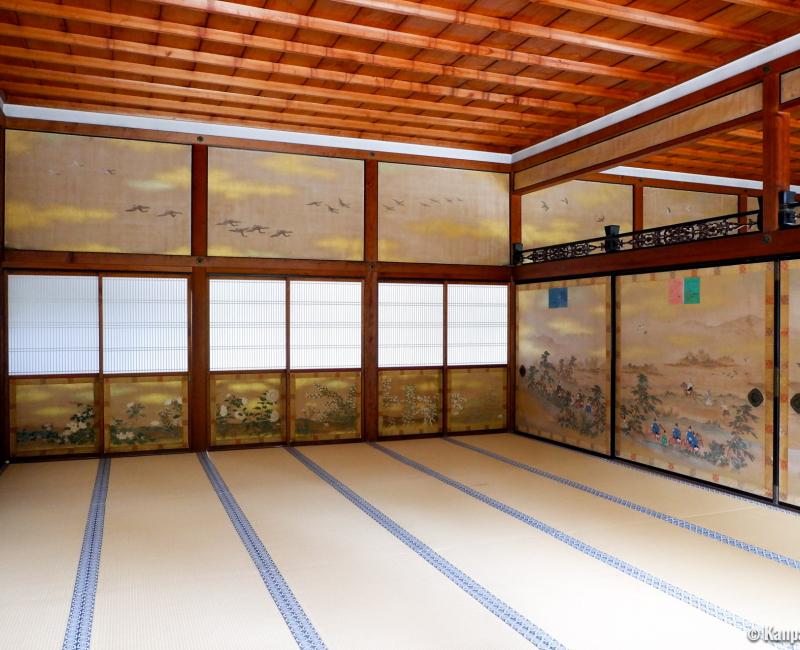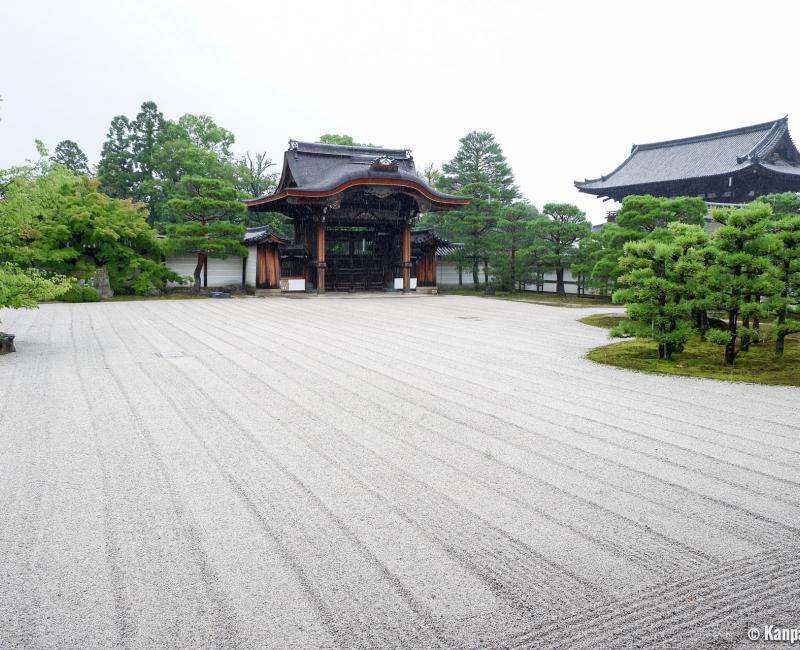Ninna-ji
The Imperial Temple in the North-west of Kyoto
Ninna-ji is a Buddhist temple of the Shingon sect’s Omuro School, located near Mount Kinugasayama, in the north-west of Kyoto. It is famous for Goten, an imperial style residence, its cherry trees park, and its well-tended gardens. Ninna-ji entered the Unesco World Heritage List in 1994 and was also designated Japan’s Important Cultural Property.
The discovery of Ninna-ji begins by the huge Niomon gate, standing on the side of the road and dating back to the 17th century. Its name derives from the statues of the two Nio guardians, Agyo and Ungyo sheltered under its roof. The majestic and vast entrance sets the tone of the rest of the visit. The temple’s grounds hold a prominent part of ancient Kyoto’s history, when it was the imperial capital during Heian period (794 - 1185).
The temple was named from the period in which it was built: constructions started on the second year of Ninna era in 886, to grant the wish of Emperor Koko. However, he passed away the following year, and it was Emperor Uda, his son, who saw the completion of the works in 888. Eleven years later, in 899, Emperor Uda stepped down and became the head priest of Ninna-ji. He was then the first leader of Japanese Buddhism of imperial lineage and the complex was thus granted the highest rank for temples: Monzeki, meaning temples only lead by members of the imperial family.

An indoor visit with a view on two Japanese gardens
The buildings dedicated for religious practice are open to the public, and we can only recommend their visit as a source of enjoyment of traditional Japanese esthetics. The buildings are structured in a succession of pavilions with tatami rooms, separated by wonderfully ornamented fusuma sliding doors. The various constructions are connected by covered passageways that also offer a view on the dry garden Nantei, displaying a vast area of carefully combed gravels adorned with Japanese pine trees. A superb view on the great Niomon gate and on Chokushimon, the richly decorated gate for imperial messengers, complements the beautiful scenery.
The covered path circles around the large Goten residence, built in the imperial Shinden style, whose architecture is characterized by half-timbered and white plaster walls. This wonderful wooden palace used to be the head priest’s quarters. It is bordered on its northern side by a garden named Hokutei, whose pond and waterfall contribute to the soothing atmosphere. The five-story pagoda Gojunoto, the 36-meters high highlight of the temple, is visible from Goten. Ninna-ji is the only temple in Kyoto whose pagoda is visible from inside its buildings.

The late blooming of Omuro-zakura cherry trees
After the early April sakura 🌸 blooming peak in Kyoto, Ninna-ji gives the latecomers the opportunity to stroll in its park to admire the Omuro-zakura, a cherry tree species that blooms late. Thanks to the small size of these trees, visitors can easily touch and feel the thousands of white and pink petals swirling in the wind.
The third and last temple of the Kinukake-no-michi road in the north-east of Kyoto to enter in the Unesco World Heritage List, Ninna-ji is pleasantly less frequented than the neighboring Golden Pavilion and Ryoan-ji temple, except during the spring seasonal peak. It is therefore the ideal walk for peace and harmony amateurs, who can experience the monastic life for one night with the shukubo lodging.

